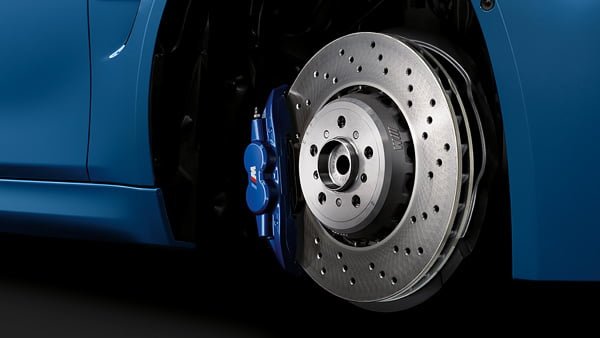Disc Brakes and Drum Brakes have been used and compared in automobiles for a very long time now because of the distinct characteristics they offer. Depending on the segment to which a car belongs, it can either have Disc Brakes on all four wheels or a combination of Disc Brakes at the front and Drum Brakes at the rear. The characteristics and comparison of the two mechanisms will help us understand why it is so. The most prominent component in the safety and reliability aspect of a vehicle is the braking system. The safety and security of the passengers, as well as the pedestrians, are of paramount importance in the automotive world. For this reason, even the laws take into account the collision hazards for passengers and pedestrians. Let us look at these two most widely used braking systems, their key characteristics and comparison in detail.

Disc Brakes- Working Principle
Disc Brakes are used at the front wheels of most cars because of their distinct characteristic of efficiency. The brake disc rotors are housed in the wheel hub assembly of the vehicle, which rotates along with the wheels. A brake caliper assembly is mounted on top of brake discs. When the brake pedal is pushed, the pressurized brake fluid from the master cylinder travels to the caliper assembly. This pushes the piston, which in turn pushes the inner brake pad against the rotor disc. The fluid causes back-pressure and the entire caliper frame gets pulled backward along the slider pins. Resultantly, the outer brake pad gets pushed against the rotor, generating friction and hence causing the vehicle to decelerate. The rotor discs are generally ventilated to dissipate heat when kinetic energy is converted to heat energy during braking.
Disc Brakes Pros And Cons
- Heat dissipation is very effective due to holes (ventilated) in the discs and more area is exposed to fresh air, which is a major advantage in comparison to the drum brakes since most of the problems in drum brakes arise due to excessive heat.
- Smooth braking due to compact housing and fewer moving parts as compared to drum brakes.
- Less complex and easy to repair because the caliper can be removed to repair without having to remove the rotor or any other component.
- Parking brakes can not be incorporated within the disc brakes as is the case with drum brakes because disc brakes are not self-energizing.
- The disc brake mechanism is a bit expensive than the drum brake system. Large carbon-ceramic calipers for example are very expensive and hence are only found in high-end luxury cars.
- The rotor discs are prone to squeaks causing the brake applications a bit noisy at times.
Also read: 2020 Hyundai i20 to get 4 Disc Brakes
Drum Brakes- Working Principle
The inherent characteristic of Drum Brakes to be inexpensive allows for the usage even today. The brake drum and wheel are attached to the wheel hub. The back-plate holds all the brake components together including the wheel cylinder, springs, pistons and brake shoes. When the brake pedal is pressed, the pressurised hydraulic fluid causes a force on the wheel cylinder and moves the pistons outwards. This pushes the brake shoes against the brake drum and the resultant friction causes the wheel to slow down. The brake shoes are held with the back-plate with the help of hold-down springs and once the brakes are released, the retaining springs cause the brake shoes to move back to the resting position. The drum brakes are generally used on the rear axle in the vehicle.
Drum Brakes Pros And Cons
- Fairly inexpensive in comparison to disc brakes.
- The contact surface is greater on the drum as compared to the discs, which results in longer life of the brakes.
- A parking brake can be incorporated inside the drum at the rear.
- The wheel cylinder in the drum is easy to work with than the caliper on the disc.
- Brake shoes can be remanufactured for future use.
- Maintenance is time-consuming and complex as compared to disc brakes because of more moving parts.
- Heavy braking can have adverse effects on drums and brake shoes due to excessive heat, causing the drums to distort.
- More braking effort is need by the driver in case of expansion of drum diameter under high temperatures.
- Because of excessive heat, the braking fluid could get vaporised.

